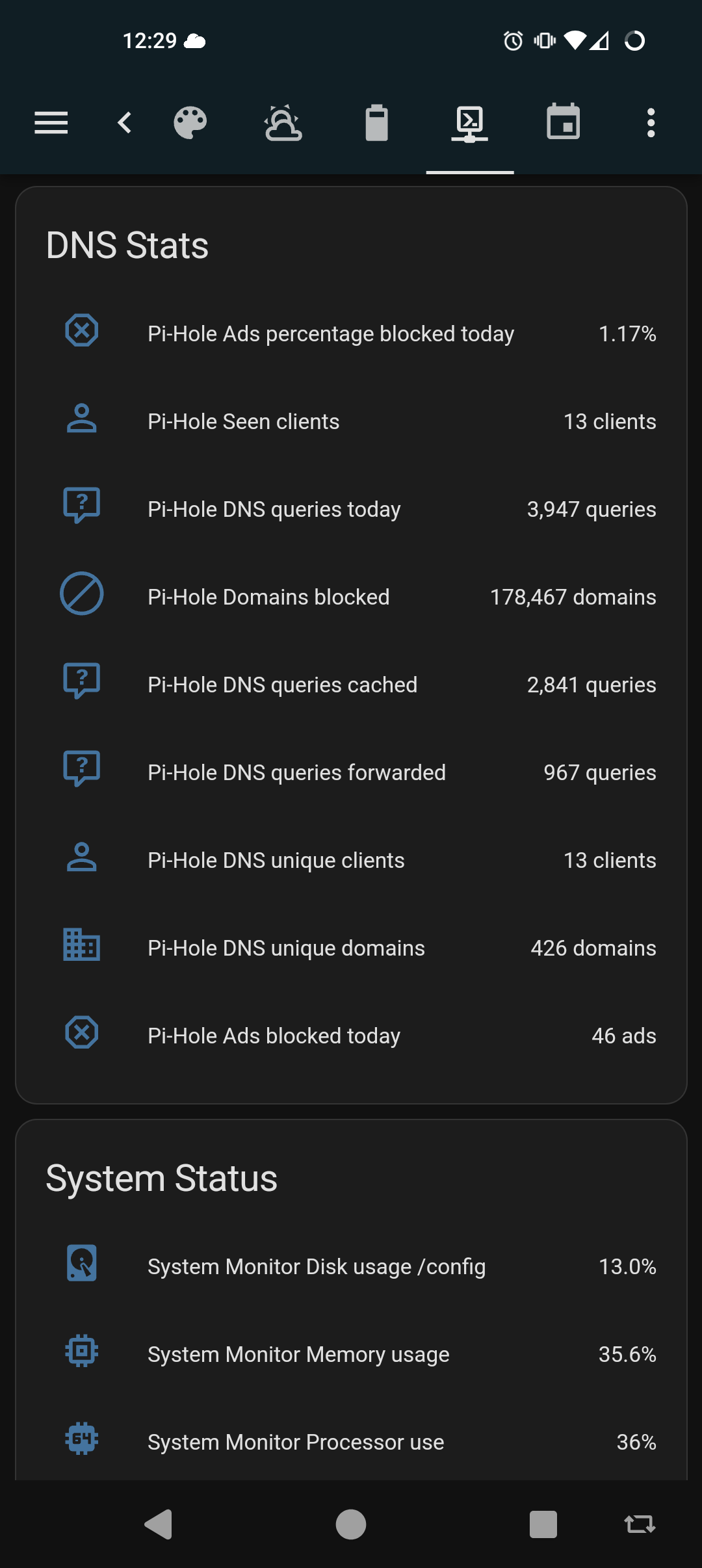SolidGrue
I’m just this guy, you know?
- 3 Posts
- 165 Comments


When you simmer or slow roast tomato sauce over several hours, the sugars in the tomato release and caramelize which helps to offset acidity. If you’re finding the cooked sauce is still acidic, you can try adding other sweet vegetables such as finely grated carrot, sweet onion, or half of a raw potato (which you’d remove before serving).
That they pack your tomatoes with lemon might mean you need to actively neutralize the extra acids, which you can do with milk or cream, or just a little baking soda as you suggest. Probably not more than a pinch, though, or the sauce could lose its brightness.
Termux (on F-droid) is a userland environment that runs on top of your Android device’s kernel. It has Debian/Ubuntu-like package management system that pulls from repos maintained by the termux team. If the package is available for aarch64, its probably available in the termux repos. Its not so much of an app as it is an alternate userland that runs on top of the same kernel, but can interact with Android a couple of different ways.
The main Termux app gets you a basic command line environment with the usual tools included in a headless Linux install. From there you can select your preferred repos, do package updates, installs, etc, just like on a desktop or laptop. You could even install a desktop environment and use RDP to access it.
Then there are some companion apps that are useful:
- Termux:boot is like a primitive rc.d feature that executes upon boot up any scripts found in the termux ~/.termux/boot directory. You could use the feature to launch an SSH server, or perhaps start your syncthing service when the phone starts up.
- Termux:Tasker is a Tasker plugin that allows Tasker to launch scripts in .termux/tasker based on whatever triggers or profiles you define in Tasker. For example, stop or start selected services when connected to your home WiFi
- Termux:API is a set of termux utilities to interact with the Android API, and do things like send messages, interact with the camera or battery, and manipulate system settings.
So you could install the syncthing package in Termux and (after setting up Termux access for your internal storage) configure it to sync folders from your phone to wherever syncthing syncs. You’d set up a start script under Termux:boot to launch it when your phone starts, or Tasker to start/stop the service on your home WiFi.
For the F-droid enabled users, it seems there’s a Syncthing app in the Termux repos:
~ $ apt show syncthing Package: syncthing Version: 1.28.0 Maintainer: @termux Installed-Size: 26.4 MB Homepage: https://syncthing.net/ Download-Size: 7857 kB APT-Sources: https://packages.termux.dev/apt/termux-main stable/main aarch64 Packages Description: Decentralized file synchronization


The article mentioned a Mout’z Soudani, but went into no further detail. This article has a little more context on the investigation into Orange County and the bribery scheme.
Martin Soudani was charged and pleaded guilty last year to an alleged $1.6 million cryptocurrency scheme that was investigated by then Executive Assistant District Attorney Stewart Rosenwasser.
™The former prosecutor and retired Orange County Court Judge is accused of knowing the alleged victim, Moutz “Marty” Soudani, the suspect’s uncle, and taking almost $50,000 from him to investigate the case.


No worries, the other poster was just wasn’t being helpful. And/or doesn’t understand statistics & databases, but I don’t care to speculate on that or to waste more of my time on them.
The setting above maxes out at 24h in stock builds, but can be extended beyond that if you are willing to recompile the FTL database with different parameters to allow for a deeper look back window for your query log. Even at that point, a second database setting farther down that page sets the max age of all query logs to 1y, so at best you’d get a running tally of up to a year. This would probably at the expense of performance for dashboard page loads since the number is probably computed at page load. The live DB call is intended for relatively short windows vs database lifetime.
If you want an all-time count, you’ll have to track it off box because FTL doesn’t provide an all-time metric, or deep enough data persistence. I was just offering up a methodology that could be an interesting and beneficial project for others with similar needs.
Hey, this was fun. See you around.


#### MAXLOGAGE=24.0 Up to how many hours of queries should be imported from the database and logs? Values greater than the hard-coded maximum of 24h need a locally compiled `FTL` with a changed compile-time value.I assume this is the setting you are suggesting can extend the query count period. It still will only give you the last N hours’ worth of queries, which is not what OP asked. I gather OP wants to see the cumulative total of blocked queries over all time, and I doubt the FTL database tracks the data in a usable way to arrive at that number.




So, like a running sum? No, I don’t think so, not in Pi-hole at least.
Pi-hole does have an API you could scrape, though. A Prometheus stack could track it and present a dashboard that shows the summation you want. There are other stats you could pull as well. This is a quick sample of what my home assistant integration sees





I buy all of my phones carrier-unlocked, and have never had a problem.
Potential pitfalls are if the IMEI is blacklisted, which could happen if the phone is reported as stolen, or if the radio deck isn’t compatible with your carrier’s network.
In the US, the AT&T and T-Mobile networks are pretty open, and you just need to pop in your SIM card. I don’t have experience with Verizon to know if you can bring your own device or not, but I imagine as long as the phone can work with Verizon then its probably just a matter of visiting a store to have it activated.


Unless I misunderstand your question, draw.io can be downloaded as a standalone Linux application and run locally.
Likewise, the Xfig package should he available in most Linux repos. It’s old, but good enough for a quick sketch.
edit: aha. My mistake. My eyes slid over ‘open source’ in the title*, and even still I hadn’t realized it was an Apache license.
* Whaaat, it was pre-coffee? Let the purest among us cast the first stone.




Usually .world upgrades late in the cycle because they’re big, and also in part because they have an outsized impact on federation issues if any should arise in the upgrade.
Also many similar reasons, but mostly because its prudent for .world to wait